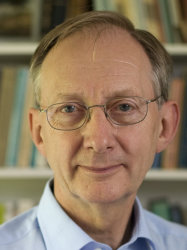BibTex format
@article{McCall:2018:2040-8986/aab976,
author = {McCall, M and Pendry, J and Galdi, V and Lai, Y and Horsley, S and Li, J and Zhu, J and Mitchell-Thomas, R and Quevedo-Teruel, O and Tassin, P and Ginis, V and Martini, E and Manatti, G and Maci, S and Ebrahimpouri, M and Hao, Y and Kinsler, P and Gratus, J and Lukens, J and Weiner, A and Leonhardt, U and Smolyaninov, I and Smolyaninova, V and Thompson, R and Wegener, M and Kadic, M and Cummer, S},
doi = {2040-8986/aab976},
journal = {Journal of Optics A: Pure and Applied Optics},
title = {Roadmap on transformation optics},
url = {http://dx.doi.org/10.1088/2040-8986/aab976},
volume = {20},
year = {2018}
}

